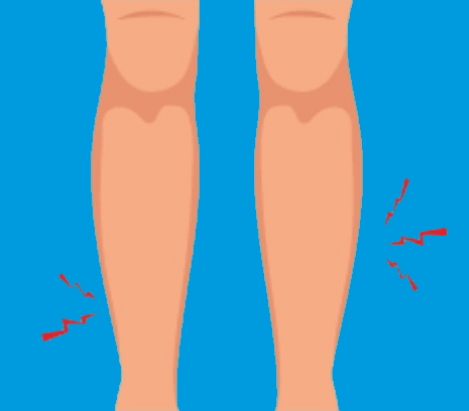Cramping Leg Pain (claudication)
CRAMPING LEG PAIN (CLAUDICATION) Q & A
Leg pain, such as cramping, heaviness and achiness, can be a symptom of vascular disease.
What Is Leg Pain?
When caused by vascular disease, patients experience leg pain, cramping, and dull achiness that often worsens over the course of the day. Sitting, standing, walking and even lying down can aggravate the pain. Cramping can indicate fluid building up in legs due to venous pressure. At its worst, leg pain can prevent a person from being mobile.
What Does Leg Pain Feel Like?
Patients describe leg pain from vascular disease as a dull, heavy ache. Some also experience itchy legs. There is often cramping and a burning sensation that worsens with walking, standing, and other activity, but subsiding with rest. Sometimes pain progresses to being constant. At this stage, patients may dangle their legs off the side of a bed, allowing gravity to assist blood flow. In extreme cases, leg pain may be accompanied by wounds, sores or ulcers that do not heal, increasing the risk for amputation and need for limb salvage interventions.

Frequently Asked Questions
Cramping Leg Pain (Claudication) Patient Education
What Causes Leg Pain?
Leg pain has many possible causes. It can result from arthritis, overuse, injury, or other damage to bones, joints and soft tissue. However, dull, heavy, crampy achiness described by patients is often caused by vascular disease in which legs are not getting adequate blood flow, have blood clots, and/or arteries and veins are not functioning properly.
Vascular conditions for which leg pain is a symptom include:
- Blocked stents and grafts from previous vascular disease treatment (occlusion)
- Chronic venous insufficiency (CVI)
- Critical limb ischemia (CLI)
- Deep vein thrombosis (DVT)
- Phlebitis
- Peripheral arterial disease (PAD)
- Varicose veins
What Are Risk Factors for Leg Pain?
Risk factors for leg pain caused by vascular conditions are correlated to the specific vascular condition. However, if vascular disease is already present, other related conditions that may aggravate leg pain include lymphedema, dermatitis, and superficial thrombophlebitis.
Can Leg Pain Be Prevented?
When vascular disease is present, there is no way to completely prevent leg pain. However, patients can lower the risk of vascular disease and accompanying leg pain by living a healthy lifestyle. A balanced diet, not carrying extra pounds, and regular exercise can improve blood flow and circulation.
Does Leg Pain Need Treatment?
Leg pain should not be ignored. It is important to find the underlying cause of leg pain. If vascular disease is suspected, physicians will perform an ultrasound to see if venous insufficiency is present. If so, vascular specialists will diagnose the condition and recommend a treatment plan. Untreated vascular disease can lead to more severe consequences, including ulcers, amputation, stroke and even death.
What Are Leg Pain Treatments?
Depending on the severity of leg pain and underlying condition, physicians may first recommend conservative treatments such as rest, compression stockings and physical therapy. If more intervention is needed, minimally invasive procedures can restore circulation and reduce leg pain.
What to Expect from Leg Pain Treatment?
If you are struggling with leg pain that makes it difficult to sleep, walk, or engage in everyday activities, contact AVI to schedule your initial consultation. As an interventional radiologist who specializes in vascular disease, Dr. Jilbert Eradat is well-qualified to diagnose and treat the root cause of leg pain. He will perform a detailed clinical evaluation that may include lab testing and vascular testing such as duplex ultrasound to determine the cause of your leg pain and recommend appropriate treatment.
At AVI, we use state-of-the-art modalities to treat venous disease, even at an advanced stage. Since only a small incision is needed for minimally invasive procedures, there are no stitches. Patients treated for vascular disease will be able to go home the same day as the procedure. Also, recovery time is much shorter than traditional surgery, so daily activities can often be resumed more quickly..

631 West Avenue Q, Suite A
Palmdale, CA 93551
Phone 661-480-5956
Fax 661-480-5976
Hours
- Monday–Friday
8 am – 5pm
Resources
Connect
